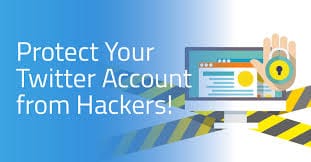In the fast-paced world of social media, Twitter (now X) stands out as a powerful platform for sharing thoughts, news, and connecting with a global audience. From personal updates to brand communication, its reach is undeniable. However, this prominence also makes Twitter accounts attractive targets for cybercriminals. The question of “how to protect my Twitter account from hackers” is more relevant than ever, as compromised accounts can lead to identity theft, financial fraud, reputational damage, and the spread of misinformation. This article will provide an in-depth guide to securing your Twitter (X) account, covering crucial cybersecurity best practices, common threats, and the importance of digital privacy in your online interactions.
How to protect my Twitter account from hackers

The Threat Landscape: Why Twitter Accounts Are Targeted
Hackers target Twitter accounts for various reasons, ranging from financial gain to political motives and simply causing disruption. Understanding the common attack methods is the first step in learning how to protect my Twitter account from hackers.
- Phishing and Social Engineering: This is perhaps the most prevalent method. Hackers send deceptive links via DMs, emails, or even tweets that impersonate legitimate sources (like Twitter support, popular brands, or friends). These links lead to fake login pages designed to steal your credentials. Social engineering also involves manipulating users into revealing sensitive information.
- Weak or Reused Passwords: If you use simple, guessable passwords or reuse the same password across multiple online services, you become highly vulnerable. A data breach on one website can expose your password, allowing hackers to “credential stuff” their way into your Twitter account.
- Malware and Keyloggers: Malicious software installed on your device (often through infected downloads or malicious links) can silently record your keystrokes, capture screenshots, or grant remote access, enabling attackers to steal your Twitter login details.
- Third-Party App Exploitation: Granting excessive permissions to third-party applications can open a backdoor. If an app you’ve authorized becomes compromised or is malicious, it can access your account, post tweets, send DMs, or even change your settings.
- SIM Swapping: A sophisticated attack where criminals trick your mobile carrier into transferring your phone number to their SIM card. This allows them to intercept SMS-based two-factor authentication codes and reset passwords for your Twitter account and other online services.
The impact of social media account compromise can be severe, leading to loss of personal data, unauthorized financial transactions if banking details are linked, and significant damage to personal or brand reputation.
Foundational Security: Cybersecurity Best Practices for Your X Account
Securing your Twitter (X) account begins with fundamental cybersecurity best practices that should be applied to all your online presence.
1. Robust Password Management
Your password is the primary gatekeeper to your account.
- Create Strong, Unique Passwords: Never use easily guessable passwords (e.g., birthdays, pet names, “password123”). Instead, create long, complex passwords (at least 12-16 characters) combining uppercase and lowercase letters, numbers, and special characters.
- Avoid Password Reuse: This is critical. If you use the same password for Twitter as you do for your email or another less secure site, a breach on that other site instantly compromises your Twitter account.
- Use a Password Manager: A reputable password manager (e.g., LastPass, 1Password, Bitwarden) helps you generate and securely store unique, strong passwords for every online service, requiring you to remember only one master password.
2. Enable Two-Factor Authentication (2FA) / Multi-Factor Authentication (MFA)
This is arguably the most crucial step you can take to protect your Twitter (X) account. 2FA adds a second layer of verification beyond your password.
- How it Works: Even if a hacker obtains your password, they cannot log in without the second factor.
- Methods for X (Twitter):
- Authentication App: (Recommended) Use apps like Google Authenticator, Authy, or Microsoft Authenticator. These generate time-based one-time passwords (TOTP) that change every 30-60 seconds. This method is generally more secure than SMS-based 2FA, as it’s not vulnerable to SIM swapping.
- Security Key: (Most Secure) Physical hardware keys (e.g., YubiKey) offer the strongest protection.
- Text Message (SMS): While convenient, X (Twitter) now generally requires an X Premium subscription for SMS-based 2FA due to security concerns (like SIM swapping vulnerabilities). If you don’t have X Premium, an authenticator app is a better choice.
- Enable 2FA: Go to “Settings and privacy” > “Security and account access” > “Security” > “Two-factor authentication” and choose your preferred method. Always save your backup codes in a secure, offline location; these are essential if you lose access to your 2FA device.
Advanced Protection: Beyond the Basics
To truly answer “how to protect my Twitter account from hackers,” you need to adopt more advanced security habits and leverage platform features.
1. Vigilance Against Phishing and Social Engineering
- Scrutinize Links: Before clicking any link in a DM or tweet, hover over it (on desktop) or long-press (on mobile) to see the actual URL. Be wary of shortened links unless you trust the source. If it looks suspicious, don’t click.
- Verify Senders: Always verify the sender of emails claiming to be from Twitter. Check the sender’s email address for slight misspellings or unusual domains. Twitter will never ask for your password via email or DM.
- Be Skeptical of Urgent Requests: Phishing attacks often create a sense of urgency (“Your account will be suspended!”, “Confirm your details now!”). Take a breath, navigate directly to the Twitter website (by typing the URL, not clicking a link), and check your account for any actual alerts.
- Report Suspicious Activity: If you receive a phishing attempt, report it to Twitter and block the sender.
2. Managing Third-Party App Permissions
Many apps and services integrate with Twitter. While convenient, some can be risky.
- Regularly Review Connected Apps: Go to “Settings and privacy” > “Security and account access” > “Apps and sessions” > “Connected apps.”
- Revoke Unused or Suspicious Apps: If you no longer use an app or don’t recognize it, revoke its access immediately. This limits the potential attack surface. Only grant access to apps you trust and genuinely need.
3. Secure Your Associated Accounts
Your Twitter account’s security is only as strong as its weakest link.
- Secure Your Email Account: Your primary email linked to Twitter is crucial for password resets. Ensure it has a strong, unique password and 2FA enabled. If your email is compromised, a hacker can easily regain access to your Twitter account.
- Secure Your Phone Number: If your phone number is linked, ensure you have strong mobile device security (passcode, biometric unlock) and are aware of the risks of SIM swapping. Contact your mobile provider to inquire about enhanced SIM protection.
4. Public Wi-Fi and Device Security
- Avoid Public Wi-Fi for Sensitive Activities: Unsecured public Wi-Fi networks can expose your data to “Man-in-the-Middle” attacks. If you must use public Wi-Fi, always use a Virtual Private Network (VPN) to encrypt your internet traffic.
- Keep Devices Updated: Ensure your operating system (Windows, macOS, Android, iOS) and web browser are always updated with the latest security patches.
- Use Antivirus/Anti-Malware Software: Install and maintain reputable antivirus software on your computer and mobile devices to protect against malware threats and spyware.
Legal and Regulatory Aspects of Social Media Security
The legal implications of social media account hacking are significant. Accessing someone’s online account without authorization is illegal in many jurisdictions and can lead to severe penalties.
- Computer Fraud and Abuse Acts: Laws like the Computer Fraud and Abuse Act (CFAA) in the United States criminalize unauthorized access to computer systems, including social media accounts. Similar laws exist globally.
- Identity Theft and Fraud: Account compromise often facilitates identity theft and financial fraud, both of which carry serious legal consequences for the perpetrator. Victims may also have civil recourse.
- Data Privacy Regulations: Regulations such as the General Data Protection Regulation (GDPR) in Europe, and various national data privacy laws (e.g., Nigeria’s Data Protection Act), impose obligations on platforms like X to protect user data and report breaches. While these primarily affect the platforms, they underscore the importance of robust data protection for individual users.
These legal frameworks highlight the seriousness of account compromises and reinforce why taking proactive steps to protect your social media accounts is paramount. The Electronic Frontier Foundation (EFF) provides valuable resources on digital rights and privacy.

The Indispensable Role of Ethical Hacking in Platform Security
While individual users play a crucial role in securing their accounts, the overall security of platforms like Twitter (X) heavily relies on the work of ethical hacking professionals and advanced cybersecurity solutions.
Social media companies continuously invest in their security infrastructure. They employ sophisticated fraud detection systems, real-time threat monitoring, and strong encryption. A key strategy in their defense is engaging with the ethical hacking community.
- Bug Bounty Programs: Platforms like HackerOne host bug bounty programs where security researchers (often called white-hat hackers) are invited to find and responsibly report vulnerabilities in Twitter’s code, systems, and applications. These might include flaws that could lead to account takeovers, data breaches, or denial-of-service attacks. When a vulnerability is found and reported, the company can patch it before malicious actors discover and exploit it. This proactive approach is a cornerstone of effective vulnerability management. You can explore how these programs work to enhance global cybersecurity at https://www.hackerone.com/solutions/bug-bounty-platforms.
- Penetration Testing: Beyond bug bounties, companies also commission professional penetration tests, simulating real-world attacks to identify weaknesses. These “red team” exercises assess the resilience of their anti-hacking measures.
- Security Audits and Compliance: Regular security audits ensure compliance with data privacy regulations and industry best practices.
These collaborative efforts, driven by ethical hacking services and continuous vulnerability disclosure programs, are vital in the ongoing battle against sophisticated cyber threats, enhancing the account security of millions of users globally.
Conclusion
The question of “how to protect my Twitter account from hackers” demands a consistent and multi-faceted approach. By adopting strong password practices, enabling two-factor authentication, exercising extreme caution against phishing and social engineering, and regularly reviewing third-party app permissions, you build a robust defense around your digital identity. Remember that your digital privacy and online reputation are valuable assets. Staying informed about the latest cybersecurity best practices and understanding the role of ethical hacking in platform security empowers you to be a proactive participant in your own online safety. For more insights into comprehensive cybersecurity and how ethical hacking fortifies our digital world, visit https://www.hackerone.com/.